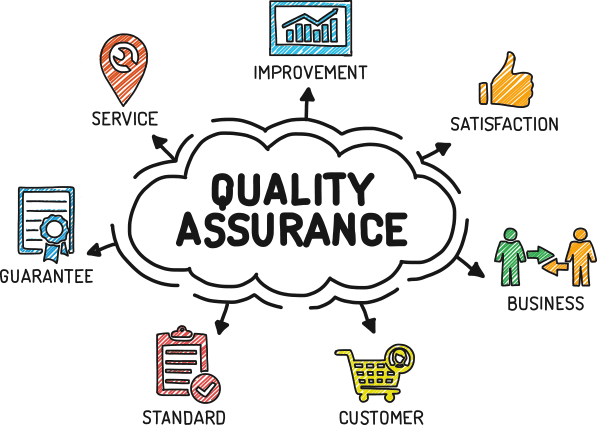
Quality assurance (QA)
is crucial to the operation of any call center. The use of QA programs allows contact centers to deliver outstanding customer service by monitoring call quality and ensuring that agents accurately follow protocols. Call centers can pinpoint areas for improvement and implement the required adjustments to boost customer satisfaction by assessing call quality.
What is Quality Assurance in a Call Center?
Quality assurance in a call center is the process of evaluating the quality of calls and the performance of call center personnel is known as quality assurance. Analyzing call recordings, monitoring client comments, and gauging customer satisfaction are all part of it. The objective is to spot opportunities for development, deal with problems before they worsen, and guarantee that clients have a great experience with your call center.
Quality assurance programs normally include four essential parts:
- Monitoring calls: QA Managers at call centers can evaluate the quality of calls by listening to live or recorded discussions between customers and agents using call monitoring. Managers can identify any possible issues, such as improper protocol usage or poor communication skills, by listening in on exchanges.
- Analyzing data: To find call center trends and areas for proper efficiency, quality assurance analysts examine customer survey replies, ratings, and other data sources.
- Giving feedback: In order to make sure call center agents comprehend call quality standards and how to adhere to best practices, quality assurance teams provide feedback to them.
- Implementing New Procedures: Call center managers to collaborate with quality assurance teams to implement the required modifications to enhance customer service once problems have been detected. This can entail implementing new procedures, giving more training, or changing organizational structures.
The Advantages of Quality Assurance
The organization is able to accomplish many objectives thanks to quality assurance. It can pinpoint problems, improve call center procedures, and boost client happiness.
Among the main advantages of call center quality assurance are:
- Increased customer satisfaction: Quality assurance procedures assist call center managers in locating and resolving potential customer-impacting problems. Customers will receive the best service possible as a result, increasing their satisfaction and loyalty.
- Increased team performance: Call center managers may make sure agents are meeting standards and have the support they need to succeed by giving agents feedback on their performance and suggestions for development.
- Reduced operational expenses: In the end, call center quality assurance aids call centers in reducing operational costs by locating potential savings opportunities and implementing the required adjustments as necessary.
- Process optimization: By reviewing data and making appropriate modifications recommendations, quality assurance teams can assist with process optimization in call centers.
Using KPIs for Quality Assurance
Key performance indicators (KPIs) are essential to call center quality assurance programs. They provide call centers with data-driven insights into how their call center is performing and allow call center managers to measure agents’ call quality.
KPIs to Look for in Call Center Quality Assurance
- Call handling, call duration, call abandonment rate, and other factors are examined by call center quality assurance. In order to ensure the quality of call centers, the following key performance metrics should be considered:
- Average call handling time: This shows how much time, on average, an agent spends on each call. A decreased average call handling time may be a sign that call center representatives are effectively managing their time and that callers are given support when they speak with the center.
- Call abandonment rate: This statistic shows what proportion of calls go unanswered. Low call abandonment rates are preferable since they show that clients are receiving prompt attention to their concerns.
- First contact resolution rate: This metric identifies the proportion of calls that were successfully handled on the first attempt, without the need for further follow-up or a change of agent. Customer satisfaction is often shown by high first-contact resolution rates.
- A customer satisfaction score (CSAT) quantifies how happy customers are with their interactions with call centers. Usually, surveys and rating systems will show this.
- Conversion rate: The number of calls that result in a successful outcome, such as a sale or new lead, is known as the call center conversion rate. Higher conversion rates may be a sign that call center representatives are upselling to customers successfully.
